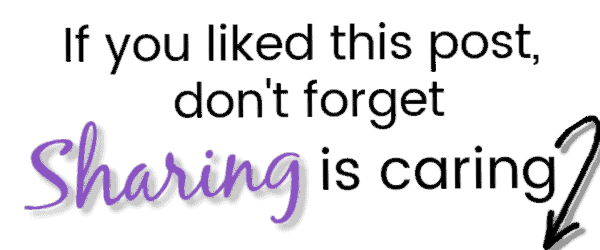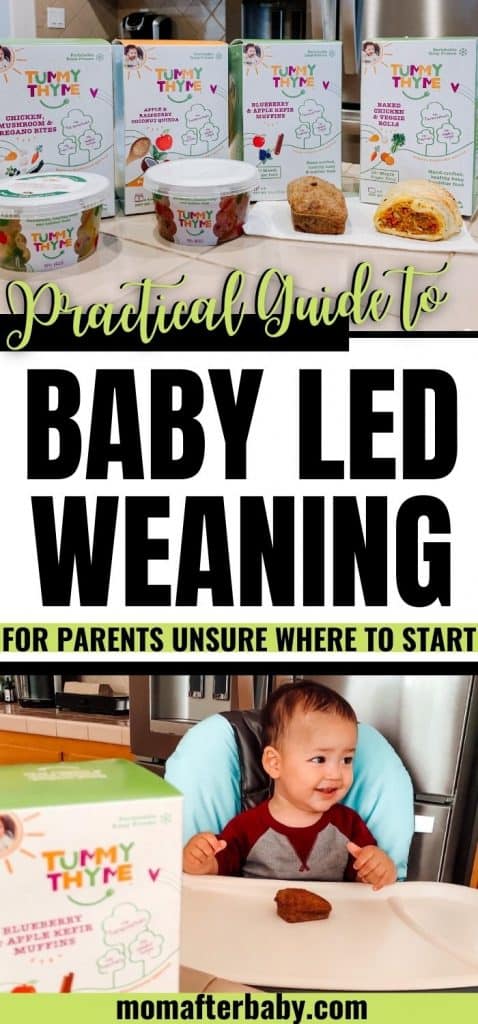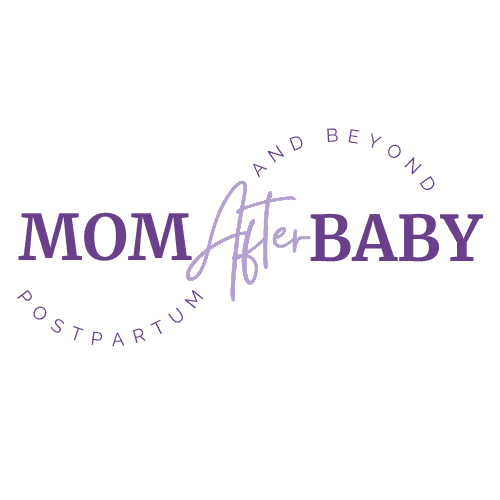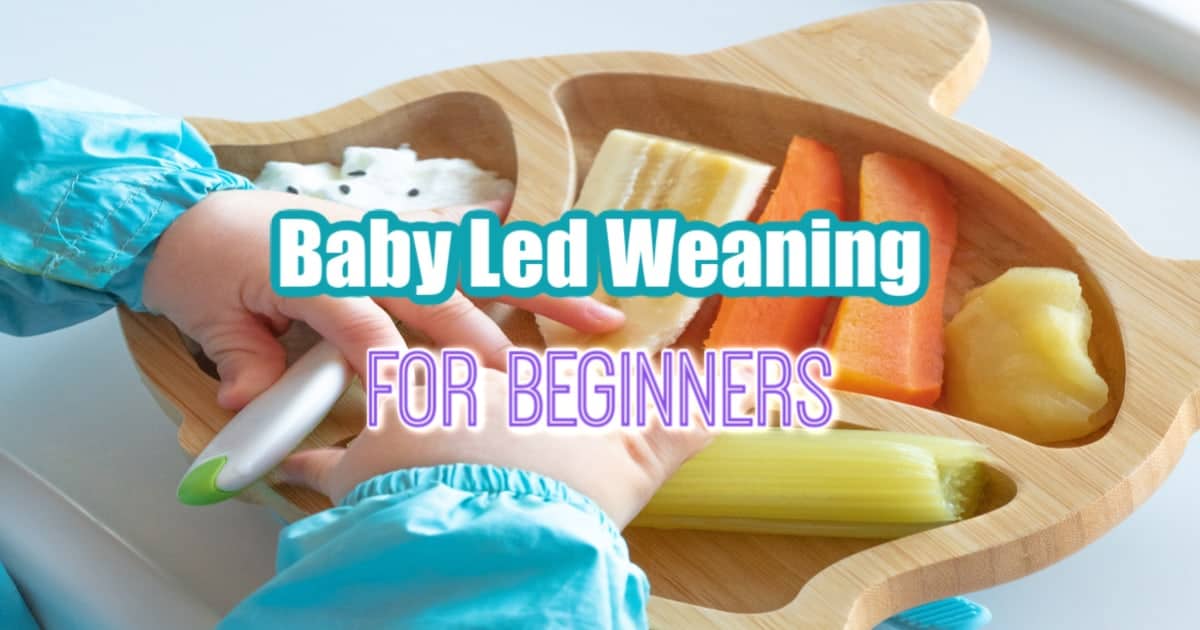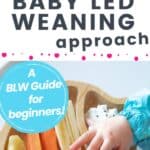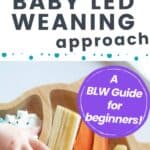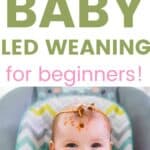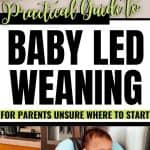All about Baby Led Weaning for beginners
This post may contain affiliate links that I may receive a commission from if you click & buy. In addition, the information on this site is NOT intended to be medical advice. See my full policy for more information.
Contemplating whether or not baby led weaning is for you and your baby? Feeling confused about how baby led weaning differs from regular solid food introduction? Don’t worry, this article is all about baby led weaning for beginners and we got your questions answered!
First things first, what the heck is this so-called Baby Lead Weaning?
Baby Led Weaning is a way to introduce *complimentary* foods to a baby’s diet of breastmilk or formula by allowing them to feed themselves via soft foods of various taste, shape, and textures.
Generally, you’ll be skipping the purées and offering them solids once they’re ready to consume them (addressed in the readiness section below).
In addition, some Baby Led Weaning methods advocate for “loaded spoon” feeding while others don’t.
However, keep in mind that some of these smaller details shouldn’t make you stress about your journey into baby led weaning.
As you begin, you will learn and find what works best for you, but more importantly, for your hungry little baby!
Essential items needed for baby led weaning:
- Sturdy high chair with wide tray (to help prevent a mess)
- Placemat & Bib set (my all-time favorite & what we use is by EZPZ)
- Sippy cup (preferably a 360 cup or a fully open cup – we absolutely LOVE the “tiny cup” also by EZPZ)
Lastly, one specific area you should be familiar in is child CPR. Please know this is NOT intended to scare you. It is, however, important to familiarize yourself with what to do IN THE EVENT you baby does choke during this process.
Although it’s rare when approached correctly, you can never ever be too prepared.
If you don’t know infant CPR, I’d encourage you to check out this online Infant Safety + CPR class by Bundle Birth.
If you’re finding yourself to be not quite ready to start solid foods like baby-led weaning, you can also try Purees!
I personally started with purees with my first little for a few weeks before moving onto chunkier foods and then transitioned into full-on baby-led weaning.
What are the benefits of baby led weaning?
•Development of the oral-motor skills (chewing, swallowing, etc…)
•Development of hand-eye coordination
•Exposing baby to a variety of foods young so that they are less picky as they get older
•Allowing them to self-feed encourages a positive relationship with food (parents shouldn’t put the food in baby’s mouths when feeding, instead allow baby to introduce foods at their own will and pace).

In fact, baby led weaning is a WONDERFUL sensory development activity for our little ones.
Just think about it, you could get extra creative with something as simple as a piece of sweet potato. They can have a normal sliced stick or they could have a crinkle-cut slice. This then introduces them to new fun textures!
How do I know if baby is ready for solids?
All babies develop differently, however, there are some key factors that can act as a guide as to whether or not your baby is ready for solids:
•Baby should be able to sit mostly on their own and definitely be able to sit up when seated in a high chair (they shouldn’t be falling/slouching to the side or bobbling their heads around)
•They should begin to use the up & down/open & close motion of their mouths (will allow them to move food from the back to front/ front to back of the mouth)
•They should be able to grab an item and bring it to their mouths.
•MOST babies have these down at or around the 6-month mark. Do not force your baby if they’re not ready & speak with your pediatrician if you have concerns.
Important note – Gagging during baby led weaning is normal!
It’s important to note that babies will very likely ‘gag’ in the beginning as they learn to eat & gagging is perfectly normal!
It’s their natural way or preventing themselves from choking! So if you notice your baby gagging up a piece of food, please don’t put your fingers in their mouth trying to get it because you could likely push the food farther and in turn cause choking.
To see the difference of gagging vs. choking this post below by @BabyLedWeanTem is beyond helpful in explaining & showing the difference!
Choosing first foods for baby:
•Your baby’s first foods should be very soft. The idea is that it could be mashed between your fingertips, but not too soft that it’ll fall apart when babies grasp it. Remember, at this point, babies don’t have chewing teeth to munch down on their food yet so it needs to be able to be “gummed” down by babies as they develop that “chewing” motion without causing choking.
•If you choose to offer “loaded spoon” feedings, this means you simply will load the spoon with whatever food you’re offering (yogurt, mashed potatoes, oatmeal, etc…) and then hand the spoon to baby so they can be the one to initiate putting the food into their mouth.
What style of feeding did we choose?
I began offering my son homemade purées around the 5.5month mark. He was very excited and always wanted what I was eating, but I knew he wasn’t entirely ready to eat Whole Foods so I decided to offer purées as a way to expose him to different flavors.
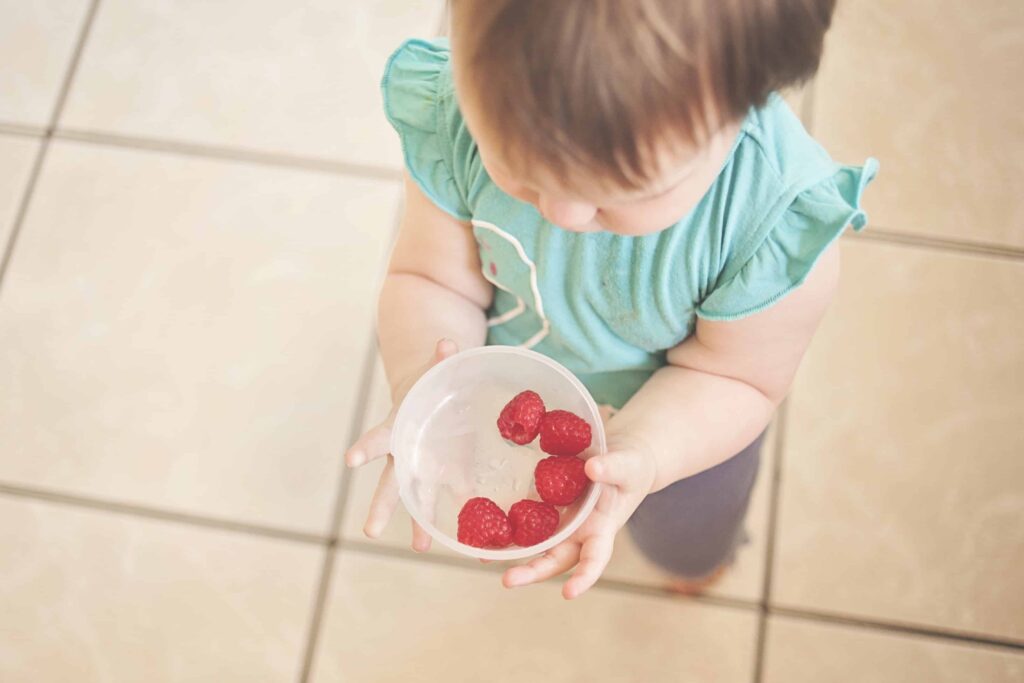
As I mentioned above, I did also use Little Spoon Purees which were a GREAT alternative to my homemade ones.
He did very well off the bat and over a 3 week period I thickened up the purees for him and he also handled that well.
Once he had his 6-month checkup, our pediatrician gave us the green light to offer him BLW styled foods as he actually did match all the developments on the above list.
And again, BLW intro food was a hit! (This kid clearly just loved food).
I started off offering 1 food 1 time a day for about 1-1.5 weeks. Then we moved onto 2 foods/day for a couple of days and then we moved onto 2 ‘meals’ per day (usually breakfast & dinner).
Prepping & Cooking first foods for baby
Meal prepping for baby can be really time consuming. Try to make a few “batch” options at once. This way, you’ll have a variety of foods to select from the week.
Generally, I do 1 carb source, 1 protein source & 1 veggie source – and I try to make sure whatever foods my little gets is also providing him a good source of iron.
If cooking just isn’t your jam or you simply don’t have the time for it, I came across these healthy & delicious already made for you (well, your baby) meals by a company called Tummy Thyme!
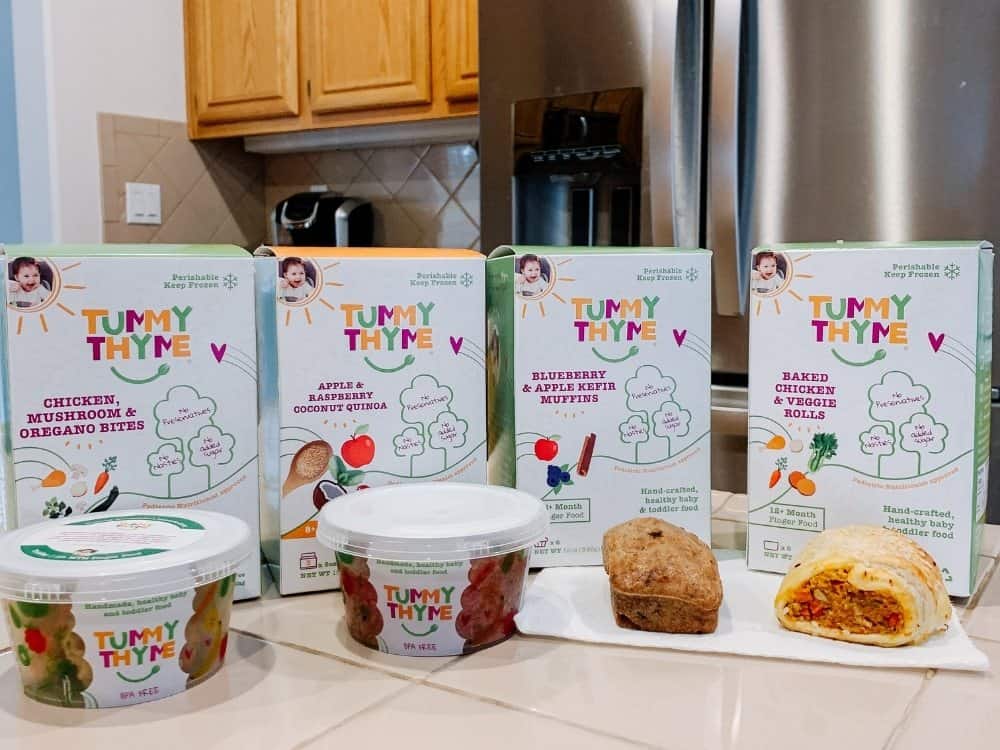
They offer a ton of variety ranging from actual fresh baby food to toddler finger foods. Honestly? They’re pretty darn good.
Hands down, using a company like Tummy Thyme can save you so much time in the kitchen. Plus, when you know you’re getting high-quality, delicious meals for your littles, is trying it out at least once really a question anymore?
Although I was never able to try them while my little guy was in the beginning stages of baby led weaning, there’s no doubt in my mind I’d be able to cut these foods up and make them “Baby Led Weaning Friendly”.
Oh and before I forget, you can see my little one enjoying his Tummy Thyme meals in the photo below, looks like he loves it!
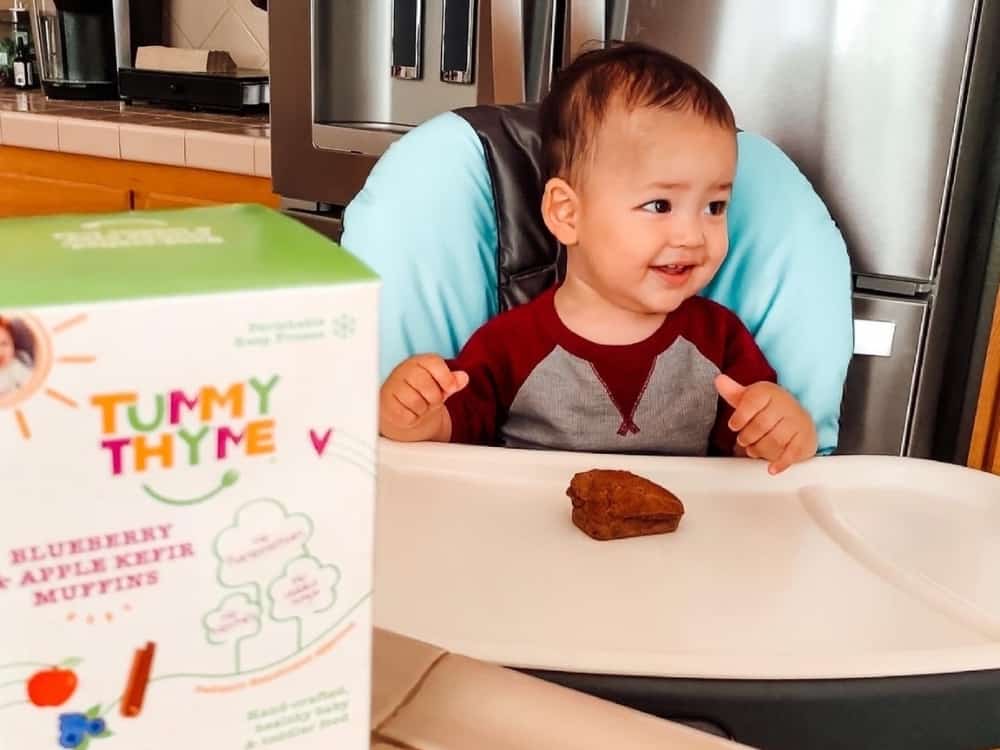
If you’re pressed for time when it comes to preparing foods, you can also try using these meal prep tools below to help speed up the process:
- Baby meal station (steamer, blender, sterilizer)
- Sandwich cutters (to use with pancakes, fruits, veggies, etc…)
Baby Led Weaning For Beginners – Recap
Baby led weaning isn’t for every family, but it sure has so many awesome benefits!
There is no one way fits all when it comes to introducing solids, but it is important you understand your baby’s readiness to eat solid foods.
Choosing your little one’s first foods can be so exciting! Take the time to prepare the foods appropriately to prevent any kind of choking hazards. If you don’t have time to cook your baby’s foods, you can use a subscription meal delivery service like Tummy Thyme for some delicious healthy finger foods for your little one!
Other Baby Led Weaning Posts:
>> Easy baked turkey meatballs for baby
>> Clever tips to help baby sleep through the night (the ENTIRE night
>> What to do when your breastfed baby is refusing a bottle?
